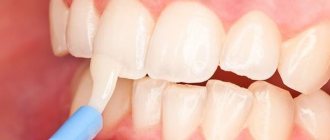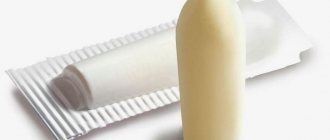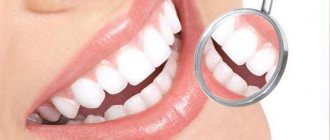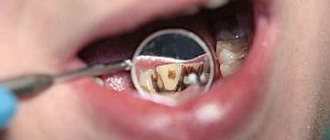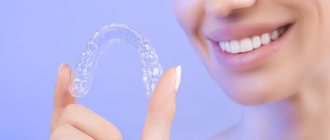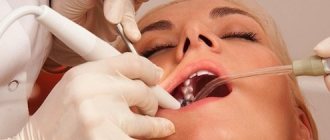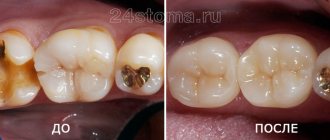Author of the article:
Soldatova Lyudmila Nikolaevna
Candidate of Medical Sciences, Professor of the Department of Clinical Dentistry of the St. Petersburg Medical and Social Institute, Chief Physician of the Alfa-Dent Dental Clinic, St. Petersburg
Today, there are many ways to whiten teeth in dentistry. Anyone who wants to get a delightful Hollywood smile will definitely find the most convenient and affordable option for themselves. You can change the color of your teeth a couple of shades to a healthy shade with professional cleaning, or you can achieve a snow-white smile with more serious cosmetic procedures. It all depends on your taste, desires and health. In any case, you can easily find the best method with the help of your dentist.
It must be remembered that whitening is a serious procedure that does not always have a positive effect on dental health. Therefore, it is important to take the choice of method and subsequent care seriously.
Let's talk about the differences, pros and cons of in-office whitening methods to help you navigate their diversity.
Classification of teeth whitening methods
Technologies for making teeth whiter are improving day by day.
A couple of decades ago, the most effective method was considered to be a mechanical method of cleaning tooth enamel. The doctor used a metal cuvette to scrape hard mineralized deposits from its surface. In this case, scratches appeared on the enamel layer and there was a high risk of injury to the gums with a sharp instrument. Today, in reputable dental clinics, this option is not even considered in the list of possible options for use. A new level of technology makes it possible to make the lightening process absolutely safe and, of course, more comfortable for the patient. Whitening methods are classified according to several criteria:
- place of procedures: office (in a medical clinic) and home (independent);
- method of influencing deposits: physical (mechanical destruction of plaque) and chemical. Physical measures include laser and ultrasound techniques. In this case, a laser or ultrasound “crushes” the stones into tiny fragments, which are then washed off with water. These techniques belong to the list of professional oral hygiene measures. They not only lighten the enamel surface to a natural shade (i.e. by 1 – 2 tones), but also significantly improve the condition of the dental tissue. In chemical bleaching, the destructive “weapons” are active elements. This process can whiten the color radically - by 8-12 shades on the Vita scale.
Composition of whitening gels
For both professional and non-professional whitening, special gels with hydrogen or urea are used. It may also contain amorphous calcium phosphate, potassium nitrate or fluorine. These elements give teeth brightness and shine and heal damaged enamel. Some gels contain components that have a soothing effect on gums and teeth.
Indications and contraindications
Despite the fact that there are many differences between the options for enamel whitening, the indications and prohibitions for their implementation are almost the same.
Indications:
- Cleansing from plaque and stone
- Pigmentation with natural and artificial food colors, tobacco resins when smoking
- Prevention of caries
- Wearing or removing braces (except chemical methods)
- Selecting the color of dentures during dentures
Contraindications:
- Any disease in the acute phase
- Nasal congestion
- Childhood
- Severe cardiovascular pathologies
- Caries and other stomas. diseases
Important: the determination of contraindications is carried out by the doctor according to the patient. Therefore, during the survey you should not withhold information. Performing the procedure with existing restrictions can cause irreparable harm to health.
Desk techniques
Some methods of achieving a snow-white smile require manipulation only in a dental clinic using special equipment.
They can only be carried out by specialists who have undergone qualified training. All methods are effective and at the same time safe for the health of patients. This is confirmed by certificates and mandatory clinical trials. Lightening and bleaching methods:
- laser cleaning – laser treatment of deposits;
- ultrasonic cleaning. It is performed using a device that generates ultrasound (scaler). It destroys hard mineralized plaque, in other words, tartar;
- Air Flow hardware technology also belongs to the arsenal of professional hygiene. Its essence is the effect on soft deposits of a directed stream of a mixture of water, air and the smallest granules of soda. This composition softens and washes away dirt even in the interdental spaces;
- ZOOM-4 is a chemical option for treating enamel with hydrogen peroxide under the influence of a special lamp. Radiation is a chemical catalyst. a process in which atomic oxygen is released from hydrogen molecules and destroys pigment. This procedure is also called photobleaching, because light radiation becomes the activator of the process. The surface to be treated must first be thoroughly cleaned. It is performed with ultrasound and Air Flow hardware cleaning.
Expert opinion: it is important to distinguish between lightening and bleaching. Lightening is the achievement of a natural shade by “removing” impurities, and bleaching is the chemical destruction of natural pigment. This can make your teeth literally snow-white.
Recommendations from dentists after the procedure
To ensure that you enjoy a snow-white smile for as long as possible, and to ensure that whitening does not cause side effects, you need to follow a few simple rules:
- Do not smoke for the first 72 hours after the session - the enamel is especially susceptible to tobacco plaque, and the expensive procedure will be pointless. Ideally, it is advised to give up this bad habit altogether - the whiteness of your teeth will become noticeable to the naked eye.
- For a week - complete abstinence from foods with dyes, especially tea, coffee, soda, sauces and berries. Instead, add fresh milk, kefir, rice, white meat, low-fat cottage cheese and asparagus to your diet.
- For two weeks - enhanced hygiene. Brush your teeth not 2 times a day, but after each meal, use mouthwash more actively, dental floss instead of toothpicks, it is advisable to buy a irrigator for home or work.
- At all times, carefully monitor the condition of your oral cavity. At the slightest pain due to cold or hot food, check for caries, promptly treat soft tissue inflammation, and visit the dentist at least 2 times a year.
Only comprehensive care after ZOOM 4 whitening allows you to prolong the effect for as long as possible and maintain the whiteness of your smile even in the modern rhythm of life.
Home methods
You can also refresh your enamel at home. The simplest thing is to use whitening pastes sold in pharmacies and stores. The main thing in achieving the goal is regularity and thoroughness. In addition, for hygienic care it is necessary to use floss (threads) and an irrigator. In addition, today dentistry offers unique home whitening technologies. One of them is the use of active agents, which the patient independently places in a mouth guard and then puts it on the dentition for a certain amount of time. The mouth guard is made from impressions of the jaws taken by the dentist. The doctor assesses the condition of the enamel layer and issues a drug in the form of a gel suitable for a specific clinical case.
Note: an uncontrolled hobby for home bleaching can lead to thinning of the enamel and, as a result, to an increase in its sensitivity. Therefore, even the independent use of whitening agents should be carried out with the recommendation of a dentist.
Arguments for and against whitening
If you have no absolute contraindications to the procedure, and those that exist can be eliminated, it remains to determine whether the gamble is worth the candle in your case. To decide whether you need to do this, you should consider the pros and cons of whitening and evaluate the possible consequences and risks. If the result suits you, you can move on to further actions.
Pros of whitening:
- Helps improve your smile and appearance. This is exactly why people are ready for bold experiments.
- Increases self-confidence. If you know that you have the advantage of a charming smile, then you behave differently. And this inner confidence is transferred to others, which can radically change your communication.
- Helps you look younger and healthier. Youth and health are no less attractive than good looks. And together they can work wonders.
Cons of whitening:
- Unpleasant consequences for gums and teeth. Since the procedure uses powerful chemical agents such as hydrogen peroxide. They can have an irritating effect on the enamel of teeth and gums. Increased sensitivity of varying severity is an almost universal side effect.
- The need to adhere to a diet. To maintain the results of whitening, you will have to eliminate or significantly limit the consumption of highly coloring foods. Otherwise, red wine, berries and soy sauce will quickly ruin all your efforts.
- Regular actions to maintain whiteness. In addition to the usual care in the form of a brush, paste and floss, maintenance therapy is often required. This may include whitening pastes, trays or strips for home use.
Alternative Methods
We looked at the main ways to lighten an enamel coating. At the same time, there are techniques that are not classical, but can visually make a smile snow-white. These are intracanal endobleaching and microprosthetics with veneers. The intracanal bleaching technique may be necessary if the tooth has darkened due to pulp removal, trauma, or the use of a colored filling material. Endobleaching involves the introduction of a lightening gel into the cleaned canal, which destroys the pigment. If the teeth are slightly uneven, have a chip or crack, and in addition their color is far from ideal, then the best option in this case would be to install veneers. These are the thinnest plates fixed to the outer surface of the dental elements. At the same time, they are sharpened minimally, and the aesthetics of the smile changes for the better as much as possible.
Which whitening to choose at home?
There are many whitening products available on the modern market that allow you to carry out the procedure without leaving your home. They differ in price category, effectiveness, safety, possible risks and other characteristics. These are various pastes, plates, mouth guards, as well as compositions prepared independently from improvised means.
It is difficult to say which method will be most effective. However, even the most expensive pharmaceutical preparations for home use will not show the same effect as dental intervention in a clinic.
Having considered what types of professional teeth whitening in dentistry exist, you can choose a technique that is right for you. We invite you to sign up for a preliminary consultation with a Dentiki dentist by calling the number listed on the website or filling out the feedback form.
What do experts recommend?
Dentists advise: before choosing a way to improve the color of your teeth, you need to decide what you want to get in the end. If the problem is dark deposits from food, drinks or smoking, then you should first carry out a comprehensive professional cleaning (ultrasound + Air Flow). Perhaps pure, natural-toned enamel is the result you were expecting. If the ideal is a snow-white “Hollywood” smile, then you need to take the next step - perform ZOOM-4. The planned shade can be selected together with your doctor according to the Vita scale. To achieve a more lasting effect, experts advise carrying out this procedure first in the clinic, then performing it at home.
The dental chain offers teeth whitening services using a variety of methods. We have family and cumulative discounts. Doctors are highly qualified and continue to improve their skills in leading Russian and European dental clinics. The level of medical services provided meets international standards.
Branches of our orthodontic center are located in Moscow within walking distance from the metro:
- Art. Alekseevskaya (VDNKh district, etc. Mira), address: st. 3rd Mytishchiskaya house 3, building 2;
- Art. Shelepikha, address: Shelepikhinskaya embankment, address: building 34, building 1.
We will make your smile beautiful! Come to us for health and beauty!
I want to whiten my teeth: what should I do?
Whitening, which is prescribed by the doctor during consultation, will be effective. In this case, the result will be individual for each patient. In addition, the visual perception of tooth color is always influenced by lighting, skin color and even the color of clothing.
Teeth whitening can be considered a safe way to improve your quality of life. You will be pleased with the reflection in the mirror, and you will no longer have to hide your smile. Healthy teeth without excess pigmentation look well-groomed and white, even if their natural shade is far from perfect white.
The cost of whitening in our clinic starts from 8,000 rubles without discount. We often hold promotions with good discounts on this procedure, so you have a great chance to evaluate the results of any system.


